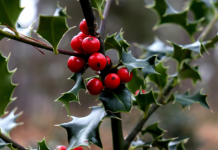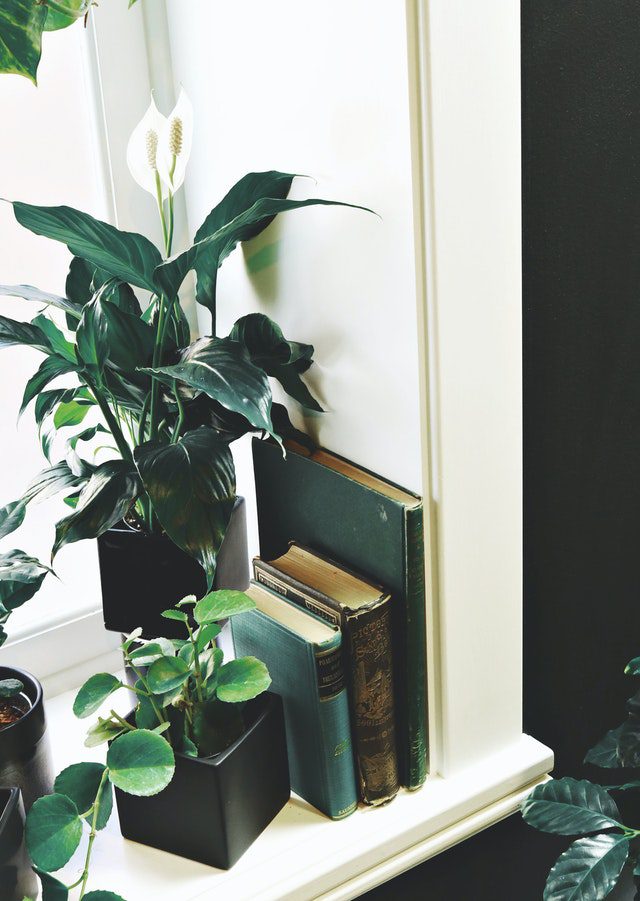Considering the recent houseplant boom, it’s not far-fetched to say the majority of people have at least one houseplant in their home.
Plant expert Madison Moulton from AllAboutGardening.com reveals that with a few basic tips, houseplant care doesn’t need to be difficult or tedious. Arm yourself with knowledge and a few tools to ensure your plants not only survive in your care, but thrive.
1. Master Watering
Watering, despite being a seemingly simple plant care task, is the one thing most houseplant parents get wrong. Whether you’re a newbie or an experienced green thumb, it’s not hard to do some serious damage to your plants when watering incorrectly.
Overwatering is the most common mistake, leading to root rot and the ultimate demise of your plant. Underwatering is also an issue, especially for forgetful indoor gardeners who frequently encounter wilted and dried-up leaves and stems.
Watering on a strict schedule (every 7 days, for example) is one way to ensure you encounter one of these issues at some point. Environmental conditions don’t remain consistent, meaning the levels of moisture in the soil don’t remain consistent either.
Rather than using a schedule, simply test the soil with your finger every two to three days. Once the top inch or two dries out, it’s time to water again. This does depend on your plants – semi-succulent and succulent plants need to dry out completely, while those with thinner leaves and stems require watering more often. Look out for signs of stress before they become impossible to resolve.
2. Don’t Settle For ‘Low Light’
There are tons of suggestions online for low-light houseplants that don’t need much sun to look their best. While most of these suggestions are not necessarily wrong, there are some crucial points that go unmentioned.
Firstly, low light does not mean no light. Rooms with absolutely no windows or incredibly dark corners of your home will never be able to sustain a plant long-term. They require sunlight for photosynthesis to survive – without it, they will eventually die.
And secondly, just because a plant can survive low lighting conditions, it does not mean it will thrive or even grow well in those areas. It might maintain its color and grow marginally each year, but it is unlikely to reach its full potential.
Where possible, give your houseplants bright indirect light, or at least moderate rather than low light. Like watering, some plants require more while others can handle less, but bright indirect light is the standard to aim for to ensure quick and healthy growth.
3. Avoid Direct Sun
The converse of the previous tip is also true – avoid direct sun at all costs. Most houseplants come from tropical rainforests where they are protected by the tall tree canopy above. They receive dappled light in these areas, never exposed to full and unfiltered sun.
Exposing these plants to direct sun will quickly burn the leaves, turning them brown and causing wilt. Even an hour of intense midday or afternoon direct sun is too much (although one hour sounds dramatic, I’ve unfortunately experienced this problem firsthand).
Keep them out of the path of direct sunlight, unless it is early in the morning and only for an hour or two. Cover bright windows with a sheer curtain to filter the light from south or west-facing windows if needed.
4. Rotate Your Pots
Once you’ve found the perfect spot for your houseplants, you may not consider moving them again unless you bring them to the sink to water. But some movement is good for houseplants, especially when it comes to light sources.
The side of your plant that receives the most sunlight will inevitably grow the quickest. Over time, this will result in unbalanced growth that, besides looking untidy, is not great for the plant’s long-term health and maintenance. Simply rotate the pots once per week to give the other side a chance in the spotlight.
5. Make Your Own Soil Mix
If you want to move your newly purchased plant to a decorative pot you’ve had your eye on or need to repot, soil mix should be the first thing on your mind. This sets the stage for the future growth of the plant and can be the cause of its success or, if you’re not careful, its demise.
Most general potting soil (or worse, garden soil) is not designed for houseplants. It does not drain well enough for indoor growth, eventually leading to root rot. Specialized houseplant mixes that account for drainage and lack of evaporation indoors are essential to the continued survival of your plants.
But, to keep your plants even happier, you can also make your own soil mix. By combining the components of houseplant potting soil (perlite, peat moss or coconut coir, orchid bark) in the same ratios as the existing potting soil, you can limit the effects of transplant shock and ensure your plant will remain happy until the next repotting.
6. Prioritize Drainage
We’ve all fallen in love with a stunning decorative pot that would be perfect for our beloved plants, only to find it has no drainage holes. Many have been tempted to try it anyway, using stones at the bottom of the container to replace drainage. Unfortunately, those plants normally end up wilted and yellowed with root rot.
Nothing (not even a layer of stones) can replace drainage holes. If your chosen pot doesn’t have any, simply drill your own or use it as a decorative pot cover with a plastic pot inside.
Those who go the pot cover route need to remember to never water inside the cover to stop water from collecting in the bottom of the container. Water over the sink and return it to the cover once all the excess water has drained away.
7. Keep Humidity Above 60%
There are many factors to consider in keeping houseplants happy. One that we tend to overlook is humidity. But, depending on your conditions, humidity could be the one thing making or breaking your houseplant growing efforts.
In tropical rainforests where most houseplants originate, humidity hovers around 70% in the dry season and up to 90% or more in the rainy season. Our homes come nowhere near those conditions, so it’s best to raise the humidity around the plants for the best growth possible.
Most plants will survive in humidity above 40%. However, bringing it closer to 60% provides the ideal compromise between your comfort and your plant’s health. Invest in a humidifier or place the plants on a tray filled with pebbles and water to increase humidity throughout the day.
8. Keep Temperatures Consistent
Houseplants don’t appreciate sudden changes in conditions, particularly when it comes to temperature. They are accustomed to temperatures between 65F and 85F in their native regions throughout the year, not tolerant of fluctuations far beyond these ranges.
Keep your houseplants in the warmest room of the house and maintain consistent temperatures indoors, especially in winter. Don’t place them in the path of air conditioners or radiators that can cause dramatic fluctuations, resulting in wilting and leaf drop.
9. Don’t Forget To Feed
Confined by their pots and the same soil mix for long periods, quick-growing houseplants will soon use up all the available nutrients in the soil. Without a top-up, growth will become stunted and you may notice signs of nutrient deficiency, such as yellowing leaves.
If your plant has been in the same pot for more than a year without repotting, don’t forget to fertilize during the active growing seasons of spring and summer, holding off in fall and winter. A balanced liquid fertilizer is suitable for most houseplants, generally applied once every 4-6 weeks with your regular watering routine.
That being said, it’s also important not to overdo feeding too. Overfertilization is a real risk to houseplants, resulting in burned roots and leaves. Read the instructions carefully and never apply more than is recommended on the packaging.
10. Repot Often, But Not Too Soon
Over time, as roots grow and expand, your houseplants will outgrow the available space in their containers. The soil will also slowly disintegrate, no longer holding onto water or nutrients that are essential for the plant’s survival. No matter what plants you have, you will need to repot eventually, and it’s not a task you should postpone.
On the other hand, repotting too soon is also potentially damaging to the health of your plants. This is especially the case when bringing a new plant home. They need time to adjust to their new environmental conditions, so repotting at this time will only cause further stress. Look out for signs that your plant needs repotting first, such as roots circling the bottom of the container or growing through the drainage holes, before repotting.
Final Thoughts
Even if you consider yourself a ‘black thumb’, houseplant care can be easy with the right tools and knowledge. Follow these 10 tips to keep your plants happy and thriving for years to come.
Further information can be found at www.allaboutgardening.com
Help keep news FREE for our readers
Supporting your local community newspaper/online news outlet is crucial now more than ever. If you believe in independent journalism, then consider making a valuable contribution by making a one-time or monthly donation. We operate in rural areas where providing unbiased news can be challenging. Read More About Supporting The West Wales Chronicle


























